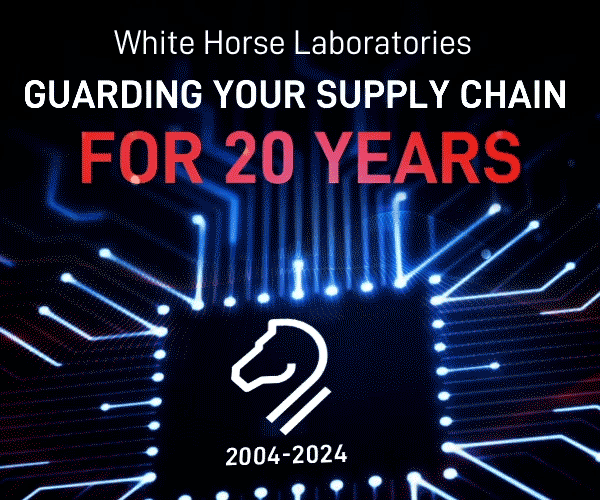2018 EU Channel Sales ‘Healthy’
Originally appeared on EPSNews
Mouser Electronics Inc. — on the tail of an announced warehouse expansion — reported that by the end of 2018 it expects to grow by almost 50 percent in Europe, from $1.34 billion to an estimated $1.87 billion, with a customer increase in excess of 18 percent. Mouser executives attribute the growth to targeted customer promotions supported by many new services and engineering and CAD tools on Mouser.com.

Graham Maggs, Mouser’s Vice-President Marketing Europe
“Of course, 2018 has been exceptional, with long lead times and allocation, massive demand from new sectors such as automotive and Big Data/IoT implementations and supplier product portfolio rationalization as a cumulative result of aggressive mergers and acquisition activity over several years,” said Graham Maggs, Mouser’s Vice-President Marketing Europe. “Yet our figures across Europe have been fantastic: UK sales are up by 43.6 percent with an 11 percent customer increase, and in Germany, it’s a massive 51.4 percent sales growth with 14.2 percent increase in numbers of customers. France is up 43.2 percent and Italy up 47.2 percent with customer growth figures of 13.6 percent and 12.3 percent respectively.”
So far, 2018 has proved to be a healthy mid-single-digit growth year for the European semiconductor distribution industry, according to DMASS Ltd., a distribution trade association in Europe. With product shortages and price increases continuing through the summer, Q3/2018 ended with 2.3 Billion Euro of sales, an increase of 6.3 percent compared to 2017. The first nine months of 2018 showed exactly the same increase of 6.3 percent, to 6.91 Billion Euro of sales.
Georg Steinberger, chairman of DMASS said in a release: “Compared to the double-digit projections we keep seeing for the total European semiconductor market from WSTS and others, European distribution does not seem to enjoy the same dynamics. However, most of their total projections are in US Dollars. Stated in US Dollars as well, DMASS grew by 14 percent in the first nine months of 2018.”
By country and region, the growth spread in Q3/2018 is rather large, between +41 percent and -17 percent, according to DMASS. Of the major regions/countries, Eastern Europe and Benelux led the pack, while Germany, Austria, Russia and Nordic trailed the average growth. In numbers, Germany grew by 2.4 percent to 700 Million Euro, Italy by 5 percent to 193 Million Euro, the UK by 9.5 percent to 166 Million Euro, France by 9 percent to 155 Million Euro, Eastern Europe by 15.6 percent to 375 Million Euro and Nordic by 3.2 percent to 189 Million Euro.
“After nine months, it shows clearly that countries with a rather huge contract manufacturing focus are growing significantly faster than the major countries in Western Europe. And most of these contractor countries are in the East and to some extent the South of Europe,” Steinberger said.
On the product side, growth rates were widely distributed, too – between -17 percent and +45 percent, DMASS reported. Similarly to Q2, commodities like discretes and standard logic did exceptionally well, while the key areas analog and MOS Micro trailed the trend – although for different reasons – and opto products actually decreased. Discretes grew by 23.5 percent to 141 Million Euro, power discretes by 12.1 percent to 240 Million Euro, sensors by 11.4 percent to 56 Million Euro.
Opto, on the other side shrank by 2.7 percent to 210 Million Euro. Analog ICs grew by 3.4 percent to 678 Million Euro, memories increased by 9.9 percent to 189 Million Euro, MOS micro by 3.7 percent to 466 Million Euro, programmable logic by 6.8 percent to 147 Million Euro, standard logic by 9.9 percent to 40 Million and finally other logic (ASSPs etc.) by 11.4 percent to 128 Million Euro.
“What is clearly visible from a nine-months-view, is that a group of commodities did really well, while some areas like LEDs, analog and ‘older’ MOS micro technologies suffered,” Steinberger added. “In the MOS micro arena it seems that MPUs and higher-end MCUs are taking control, while the analog field is seeing former distribution business being handled by manufacturers direct. For the year 2018, we maintain our position of a solid single-digit ending.”
DMASS Ltd. reports to members only new statistics on passive components, electromechanical components and power supplies.
Mouser’s success in Europe, according to Maggs, “is due to our focus on the design engineer. Our ever-increasingly connected world means that the diversity of applications that rely on electronic components is huge. The roll out of 5G, Smart Cities and Autonomous Vehicles offers massive opportunities, but also requires designers to ensure that their particular implementation of these and many other technologies has a benefit over competing solutions. That requires designers to be able to access new components as early as possible in the design cycle, to be able to use the necessary design tools and development kits. Supplying new products and the design tools required to use them is the role that Mouser fulfils.”
To support this, at the recent Electronica exhibition, Mouser announced a further phase in the expansion of its global headquarters and distribution center in Texas, primarily in order to house the increased stocks needed to support the expansion it is experiencing.
Mouser executives are confident that despite international uncertainties surrounding Brexit and further unrest in Europe, aggressive trade and tariff negotiations and other global conflicts, growth in 2019 will continue, both for the industry and Mouser. “International affairs are indisputably perplexing and complex, but trade will find a way to overcome,” concludes Maggs. “Mouser operates in 220 countries or territories globally, so we are well-used to tariffs, taxes and regulations. Our great advantage is our stock position and I am confident we will rise to the challenges that 2019 will provide.”










